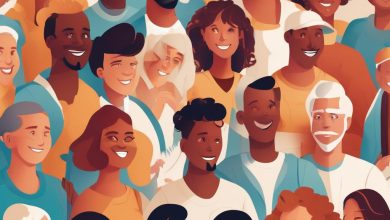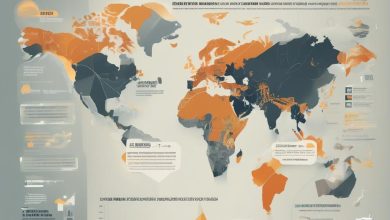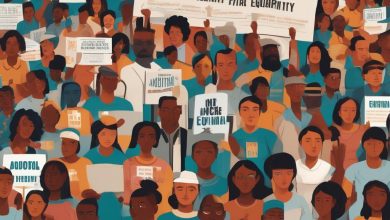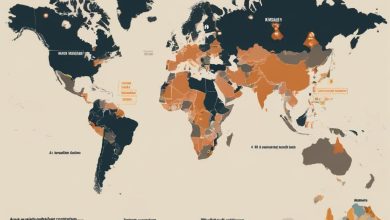Migration and Education: Opportunities and Barriers
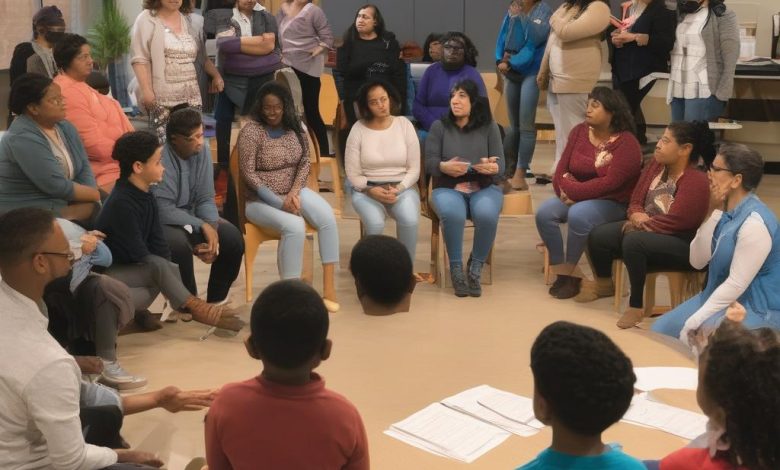
Migration and Education: Opportunities and Barriers
Our world is getting more connected, making the link between migration and education very important. This article looks at how these two areas affect each other. It talks about the good and bad things that happen when people move to new places and go to school.
Moving to a new country can change how students learn. Migrant students might struggle with new cultures and languages. But, their unique experiences can also make classes more interesting and help everyone see the world from different views.
This article wants to help people understand the complex relationship between moving and learning. We’ll look at the problems migrant students face, the help they get, and how teaching can change for the better.
Key Takeaways
- Migration can present both opportunities and barriers for student learning and achievement.
- Migrant students often face cultural and linguistic challenges that can hinder their academic progress.
- Inclusive educational policies and support systems are crucial in addressing the needs of diverse student populations.
- Embracing cultural diversity and implementing teaching methods that cater to the unique needs of migrant students can foster more equitable learning environments.
- Ongoing collaboration between policymakers, educators, and communities is essential in ensuring that the educational experiences of migrant students are empowering and transformative.
Understanding the Impact of Migration on Education
Moving to a new place can change how students learn. Migrant students often find it hard to do well in school and fit in with others. It’s important to know these challenges to help them succeed.
Challenges Faced by Migrant Students
Language barriers are a big challenge for migrant students. If they speak a different language at home, they might struggle to keep up in class. This makes it hard to understand what’s being taught, talk with teachers, and do homework.
Culture also plays a role. What students are used to in school can be very different from what they find in their new place. This can make them feel left out and not part of the class.
Students may also have trouble catching up because of gaps in their education. Moving a lot can mean missing out on important lessons. This can put them behind their classmates.
Bridging Cultural and Linguistic Gaps
To help migrant students, we need to find ways to support them. Here are some ideas:
- Offering language help, like ESL programs or classes in two languages
- Using teaching methods that respect students’ backgrounds
- Providing extra help to fill in knowledge gaps
- Making schools welcoming places for everyone
- Working with families to understand their needs
By tackling language, culture, and academic challenges, we can make schools better for migrant students. This way, they can do well and reach their goals.
| Key Challenges for Migrant Students | Strategies for Supporting Migrant Students |
|
|
“Embracing the diversity of migrant students and providing them with the necessary support can transform classrooms into vibrant, enriching learning environments for all.”
Migration and Education: Opportunities and Barriers
The link between migration and education is complex, with both chances and hurdles for migrant students. Inclusive policies, community support, and new teaching methods can make learning fairer. Yet, many migrant families face obstacles in getting quality education.
Inclusive policies can make schools welcoming for migrant students. These policies help migrant families get the same access to education, language help, and cultural support. Schools that value migrant students’ backgrounds help them feel at home and do well in school.
Community support is also key for migrant students. Local groups, charities, and centers offer tutoring, mental health help, and family programs. These efforts help migrant students succeed in school. They work with schools to support migrant families fully.
But, many hurdles stop migrant families from getting into education. Language, money issues, and immigration status make it hard for them. We need to tackle these with policy changes, more money, and teamwork between schools, communities, and government.
New teaching methods are important for migrant students too. Using teaching that respects different cultures, teaching in many languages, and learning plans that fit each student helps a lot. This way, migrant students get the help they need to do well. It also makes learning better for all students, helping everyone understand and value different cultures.
In the end, migration and education have both good and bad sides. With the right policies, support, and teaching methods, we can make schools better for migrant students. This way, they get the support they need to succeed.
Educational Policies and Support Systems
Migrant students need special support to do well in school. Governments must make sure they get the help they need. This includes both academic and social support.
Inclusive Curriculum and Teaching Methods
Supporting migrant students means using inclusive teaching methods. This means making sure the curriculum reflects their diverse backgrounds. It also means teaching in ways that respect their cultures and languages.
By doing this, students feel more at home in class. They can learn better and do well.
Inclusive teaching includes:
- Using diverse stories and views in lessons
- Teaching in ways that fit different learning styles and languages
- Encouraging students to work together and understand each other’s cultures
- Offering extra help with English for those who need it
This approach helps migrant students feel like they belong. It also helps them do better in school.
Government support goes beyond just teaching methods. They can work with local groups and offer extra programs. These can include after-school activities and ways for families to get involved.
| Policy Initiatives | Key Objectives |
| Bilingual and Multilingual Education Programs | Provide language instruction and support for students with diverse linguistic backgrounds |
| Targeted Funding for Migrant Student Services | Allocate resources for specialized academic, social, and psychological support |
| Teacher Training and Professional Development | Equip educators with the skills and knowledge to create inclusive, culturally responsive classrooms |
With these policies and support, governments can make schools better for migrant students. They can help these students reach their full potential.
Conclusion
The link between migration and education is complex, with both chances and hurdles for students and teachers. Migrant students face challenges like language and cultural differences, and breaks in their studies. We need new and welcoming ways to help them succeed.
Helping migrant students is a matter of right and wrong, and it’s also smart for our future. By supporting education policies that value diversity and give everyone equal learning chances, we help migrant students do their best. This makes our communities richer and more vibrant.
With more people moving around the world, this issue is more important than ever. We must keep working to make education fair and welcoming for everyone. By focusing on the challenges and the benefits of diversity, we can make sure all students, no matter their background or where they come from, can do well and achieve their dreams.
FAQ
What are the key challenges faced by migrant students in the education system?
Migrant students often struggle with language barriers and cultural differences. They also face challenges in adapting to new learning settings and catching up on academic gaps. These hurdles make it hard for them to do well in school.
How can schools and communities help bridge the cultural and linguistic gaps for migrant students?
Schools and communities can help by offering language support and teaching methods that respect different cultures. Mentorship programs and inclusive schools are also key. Plus, after-school programs and family outreach can make migrant students and their families feel at home.
What are some of the educational opportunities available for migrant students?
Migrant students can find many educational chances, like bilingual programs and special academic help. They can also explore vocational training, scholarships, and financial aid. New teaching methods and inclusive policies make learning more fair for them.
How can educational institutions and policymakers address the barriers to education for migrant families?
Policymakers and schools can tackle migrant families’ challenges by offering inclusive lessons and language help. They should also make sure everyone has what they need, like school materials and rides to school. Working with community groups and pushing for better support can make schools welcoming for migrant students and their families.
What are some innovative approaches to teaching and learning that can benefit migrant students?
Teaching methods like project-based learning and using students’ cultures in the classroom can help migrant students. Technology, like online classes and language apps, can also support them. These approaches make learning more personal and effective.

